Living by the coast is beautiful, but the salt and humidity can destroy your window coverings. Warped wood and rusted metal are common frustrations for homeowners.
The best blinds for coastal homes are made from moisture-proof materials[^1] like faux wood[^2], PVC[^3], and aluminum[^4]. These options resist warping, cracking, and rust from salt air. Polysatin shutters[^5] are also an excellent, durable choice for classic coastal style.
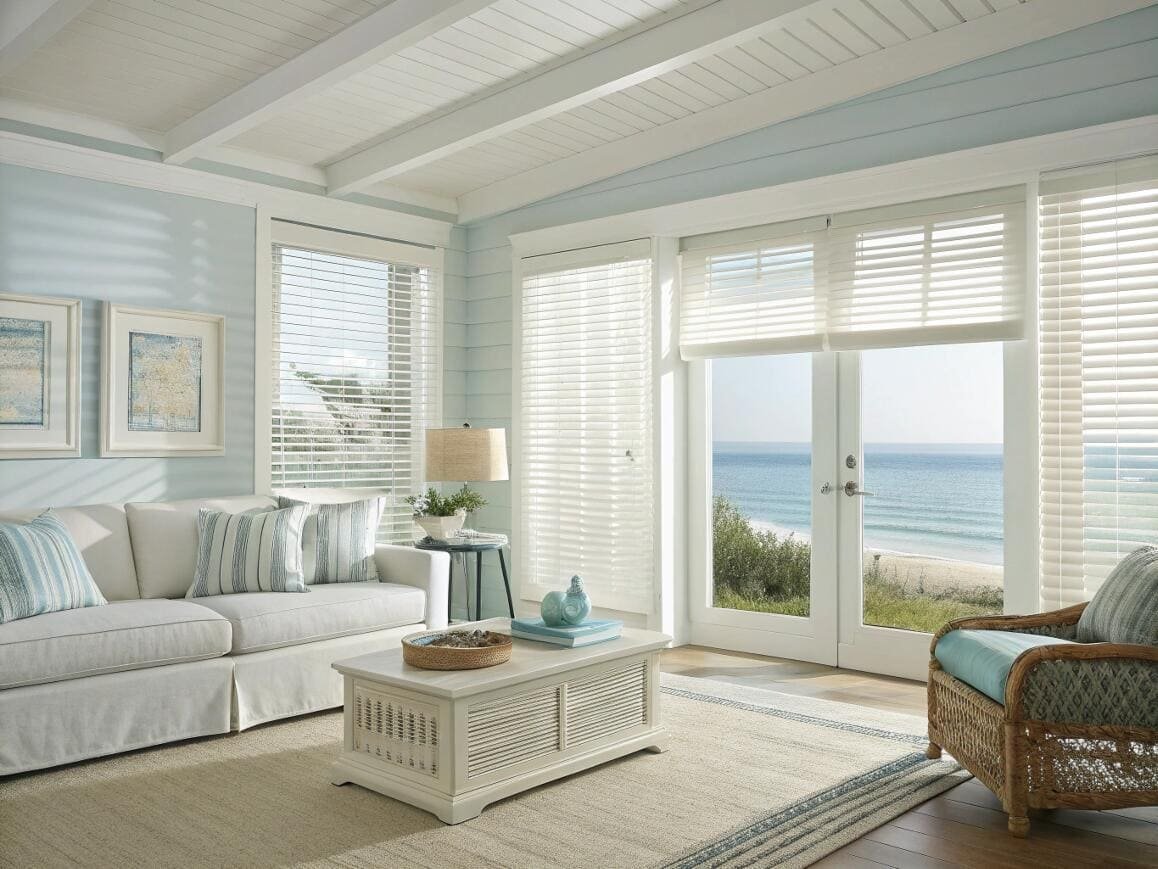
I work with designers who specialize in coastal properties, and durability is always their number one concern. The sun, salt, and moisture are a tough combination. But choosing the right material is only half the battle. You also want to preserve that gorgeous view. Let's look at how to get the best of both worlds.
What blinds allow you to see out but not in?
You want to enjoy your ocean view without letting neighbors see inside. Standard blinds force you to choose between view and privacy, which isn't ideal.
Solar shades are the best option for seeing out but not in during the daytime. Their special fabric weave blocks UV rays and glare while preserving the view. For 24/7 privacy control, top-down/bottom-up shades[^6] are also a fantastic solution.
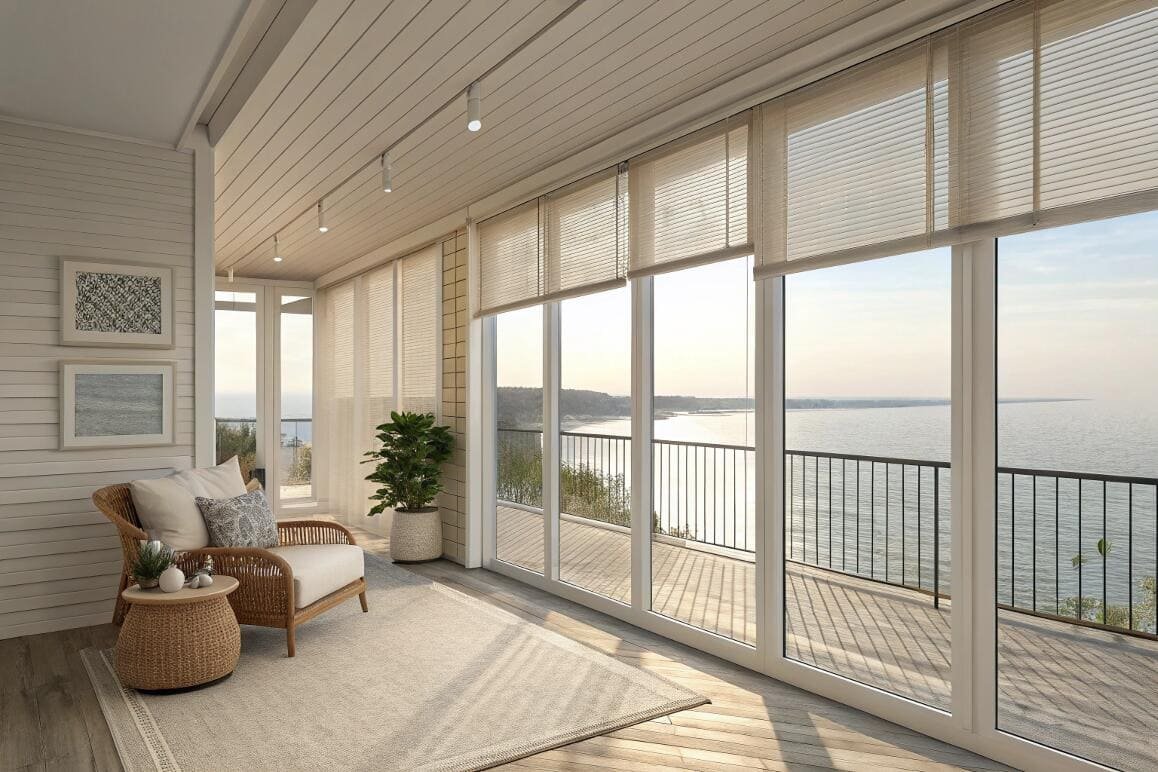
This is a common request for beach houses. Solar shades are my go-to recommendation. They work like one-way mirrors during the day. The magic is in the fabric's "openness factor," which is usually between 3% and 10%. A 3% openness shade gives you more privacy and UV protection up to 99%, while a 10% openness shade offers a clearer view. At night, the effect reverses, so you'll need a second layer like drapes for privacy after dark.
Another great solution is the top-down/bottom-up feature, available on many shade types. This lets you lower the shade from the top, allowing light and a view of the sky while keeping the bottom half of the window covered. It's a perfect compromise for ground-floor rooms that still want to capture that beautiful seaside light without sacrificing privacy.
What window coverings are in style in 2025?
You want your coastal home to look fresh and modern, not dated. Window covering trends change, and you want to make a stylish, long-lasting investment.
For 2025, the trends are all about natural textures[^7] and smart technology[^8]. Woven wood shades made from sustainable fibers like bamboo are very popular. These are often paired with smart motorization for automated control that adds convenience and energy efficiency.
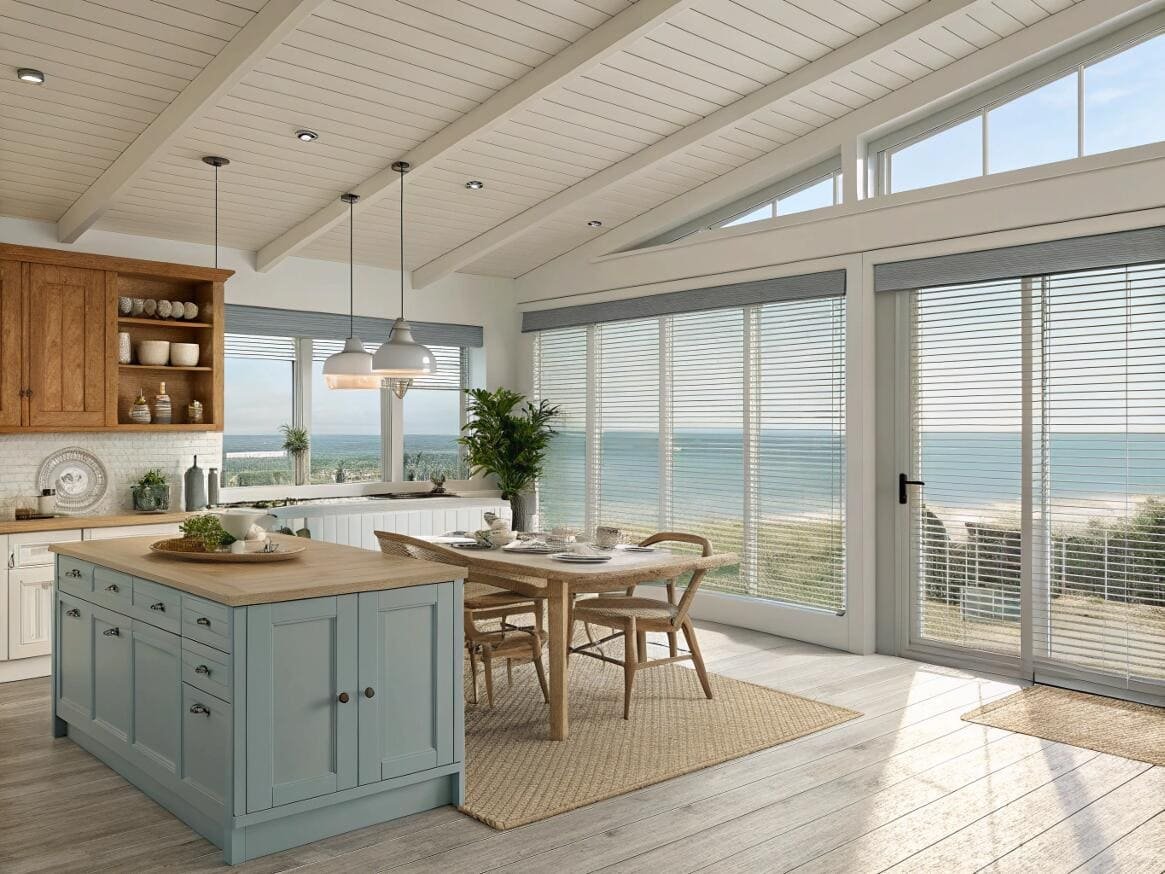
The biggest trend I am seeing is a move towards sustainability and automation. My clients are asking for materials that are not only beautiful but also eco-friendly. That’s why woven wood shades[^9] are so popular. They are hand-woven from materials like bamboo and reeds, adding an organic texture perfect for the relaxed coastal vibe. We work with suppliers whose crafting process minimizes stretching and deformation, which was a problem with older styles.
And everything is getting smarter. I've helped clients install motorized rollers[^10] programmed to lower during peak sun. This simple automation can cut cooling loads in a beach house by a significant amount. Layering is also a huge trend. People are pairing functional shades, like solar shades[^11], with soft, sheer drapery to soften the light and add elegance.
What blinds does Joanna Gaines use?
You love the modern farmhouse style popularized by designers like Joanna Gaines. You want to bring that same relaxed, light-filled aesthetic to your home's windows.
Joanna Gaines often uses simple, functional window treatments that don't obstruct the view. She frequently opts for classic roller shades, woven wood or bamboo shades for texture, and sometimes no blinds at all to maximize natural light.

The "Fixer Upper" style is all about simplicity, texture, and light. That's why you don't see a lot of heavy, ornate window coverings in her designs. When she does use blinds, they serve a clear purpose without being the center of attention. I often recommend similar styles to clients aiming for this look.
Roller shades are a favorite because they are minimal and almost disappear when rolled up. This fits the philosophy of letting the home's architecture shine. Woven wood shades are another key element. They bring in the natural, organic texture that is central to both modern farmhouse and coastal aesthetics. In many of her designs, especially in common areas, she'll even leave windows bare to create a bright, airy space. The key takeaway is to choose simple, textured, and functional treatments.
What are people using instead of blinds?
You're exploring all your options and notice that many modern homes are using different solutions. You wonder what design-forward alternatives to traditional blinds are available right now.
Instead of traditional blinds, many people are now using solar shades, cellular shades, and layered drapery over shades. These alternatives offer better insulation, sleeker profiles, and more sophisticated light control for a modern look.
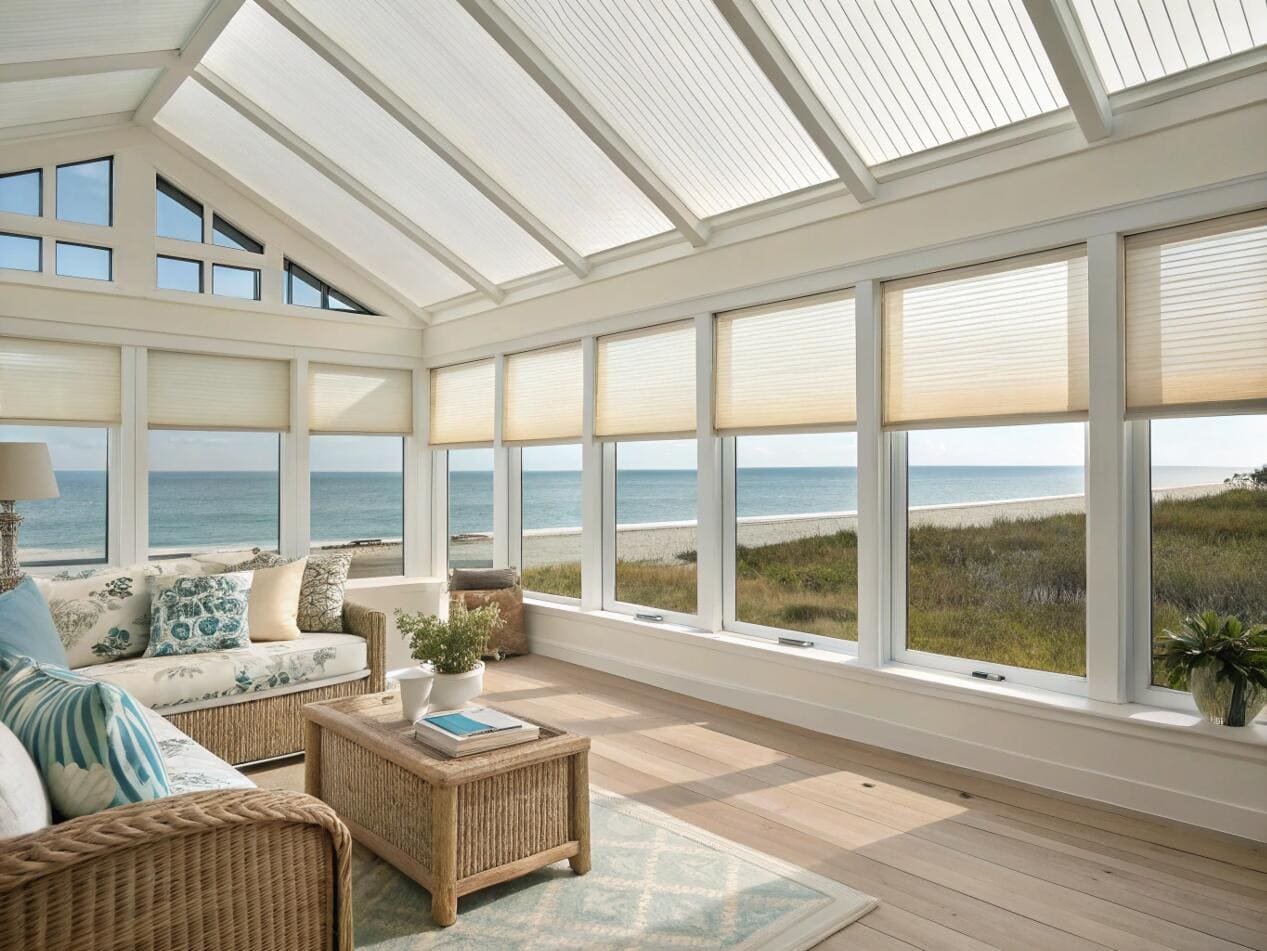
While blinds are timeless, other solutions are gaining popularity for their specific benefits. For my client Emma, an interior designer, performance is just as important as aesthetics. Solar shades are a top choice for her coastal projects because they control heat and glare without blocking the million-dollar view.
Cellular (or honeycomb) shades are another big one. Their insulating properties are unmatched, which helps with energy bills in both hot and cold climates. People are also moving away from a single window treatment. The trend of layering[^12] is huge. A common combination I install is a functional, low-profile roller or solar shade with decorative sheer curtains on top. This "dual-layer" approach gives you the best of both worlds: high-performance light and heat control from the shade, plus the softness and style of drapery.
Why are blinds being discontinued?
You may have heard rumors that blinds are being discontinued. This can cause confusion and hesitation when you're about to invest in new window treatments for your home.
Blinds are not being discontinued. However, new safety regulations in the U.S. and Canada target the sale of corded blinds to eliminate the risk they pose to children. The industry has shifted to cordless, safer alternatives like motorized or wand-controlled blinds.

This is a major point of confusion, so I want to be very clear: blinds themselves are here to stay. The change is about safety. For years, long, dangling cords on blinds posed a serious strangulation hazard for young children. As a result, new safety standards were put in place to ban the sale of most free-hanging corded window treatments.
This has actually pushed the industry forward in a great way. The market is now full of innovative and much safer options. Cordless lift systems are the new standard; you just push the blind up or pull it down with your hand. Motorized blinds, which I specialize in, are another fantastic solution. You can control them with a remote, an app, or even your voice. This not only eliminates cords but also adds a layer of convenience my clients love. So, you're not losing options; you're gaining safer, more modern ones.
How much do window blinds usually cost?
Budgeting for window treatments is stressful. You see a huge range of prices and don't know what's reasonable, making it hard to plan your project costs accurately.
The cost of window blinds varies widely based on material, size, and features. A standard-sized, custom faux-wood blind[^13] can range from around $42 to over $130 per window, depending on its dimensions and quality.
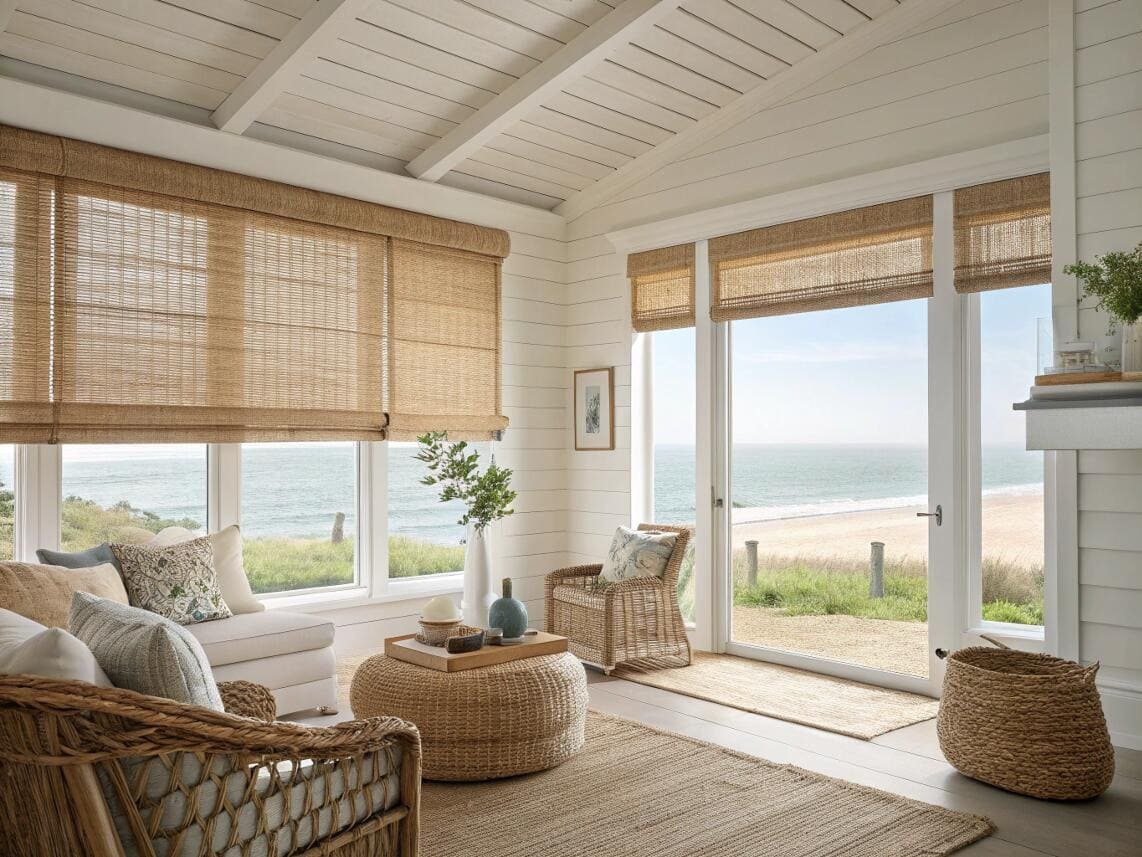
As a supplier, I provide quotes every day, and price is always a key factor. The cost depends on material, size, and any custom features like motorization. Faux wood is a great example for coastal homes because it's so popular and durable. To give you a better idea, I've put together a sample price guide for a custom faux-wood blind.
| Window Size (Width x Height) | Estimated Price Range |
|---|---|
| Small (e.g., 20" x 24") | $42 - $65 |
| Medium (e.g., 48" x 60") | $75 - $110 |
| Large (e.g., 72" x 74") | $100 - $130+ |
Remember, this is for a standard, good-quality faux-wood blind. Materials like high-performance solar fabrics[^14] or polysatin shutters will cost more. Adding motorization also adds to the initial investment, but many of my clients find the convenience and energy savings are well worth it in the long run.
Conclusion
For coastal homes, choose moisture-proof materials like faux wood or PVC. Use solar shades to keep your view, and consider smart motorization for ultimate convenience and energy savings[^15].
---
[^1]: Explore this link to discover the best moisture-proof materials that can withstand coastal conditions.
[^2]: Learn why faux wood is a popular choice for coastal homes and its advantages over traditional wood.
[^3]: Find out how PVC can be a durable and moisture-resistant option for window coverings.
[^4]: Discover the benefits of aluminum blinds, including their resistance to rust and corrosion.
[^5]: Explore the durability and style of Polysatin shutters for coastal living.
[^6]: Discover how these shades offer flexibility in light control and privacy.
[^7]: Stay updated on the latest trends in window coverings, focusing on natural textures.
[^8]: Explore how smart technology enhances convenience and energy efficiency in window coverings.
[^9]: Learn about the aesthetic and functional benefits of woven wood shades.
[^10]: Discover how motorized rollers can improve convenience and energy efficiency.
[^11]: Learn how solar shades can provide privacy while preserving your ocean view.
[^12]: Explore the benefits of layering window treatments for style and functionality.
[^13]: Get insights into pricing for custom faux-wood blinds and their value.
[^14]: Discover the advantages of high-performance solar fabrics for energy efficiency.
[^15]: Learn how the right window treatments can significantly reduce energy costs.
Partner with VelaBlinds for Your Next Project
Smart window treatments shouldn't be complicated. After working with 500+ distributors and contractors worldwide, I've streamlined the process to get you quality products, competitive pricing, and reliable support - every time.
Why project professionals choose VelaBlinds:
- ✅ Fast, Accurate Quotes - Detailed specs and pricing within 24 hours
- ✅ Transparent Pricing - No hidden fees, volume discounts clearly outlined
- ✅ Quality Assurance - Direct partnerships with certified OEM manufacturers
- ✅ Project Support - Dedicated account manager from quote to delivery
Start your next project:
📧 Quick Quote: Send your requirements to info@velablinds.com
📱 Direct Contact: WhatsApp +86 137 2012 8317
🌐 Browse Solutions: https://velablinds.com/
📁 Product Resources: Access spec sheets, catalogs & project files
Paul Chen, Founder
"I built VelaBlinds to solve the real challenges I faced as a project buyer - long lead times, unclear specs, and unreliable suppliers. Let's discuss how we can power your projects with smarter blinds."
Serving distributors and contractors across North America, Europe, and Australia since 2018.




